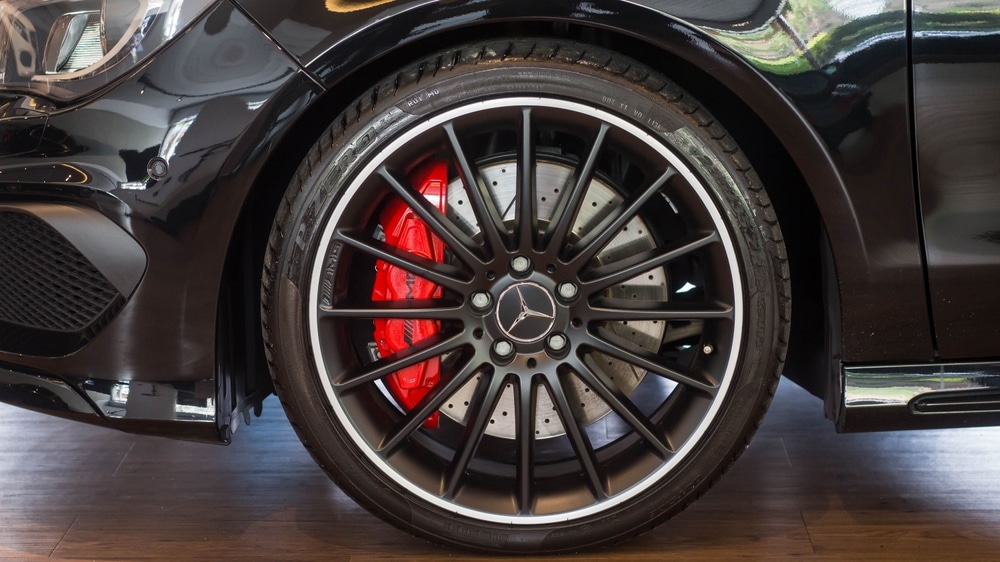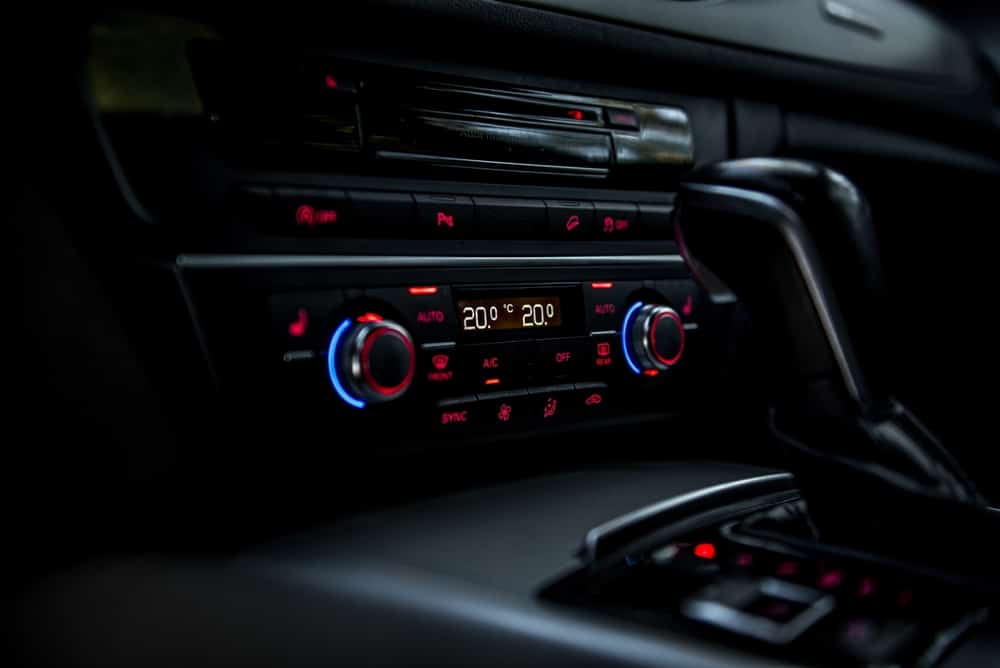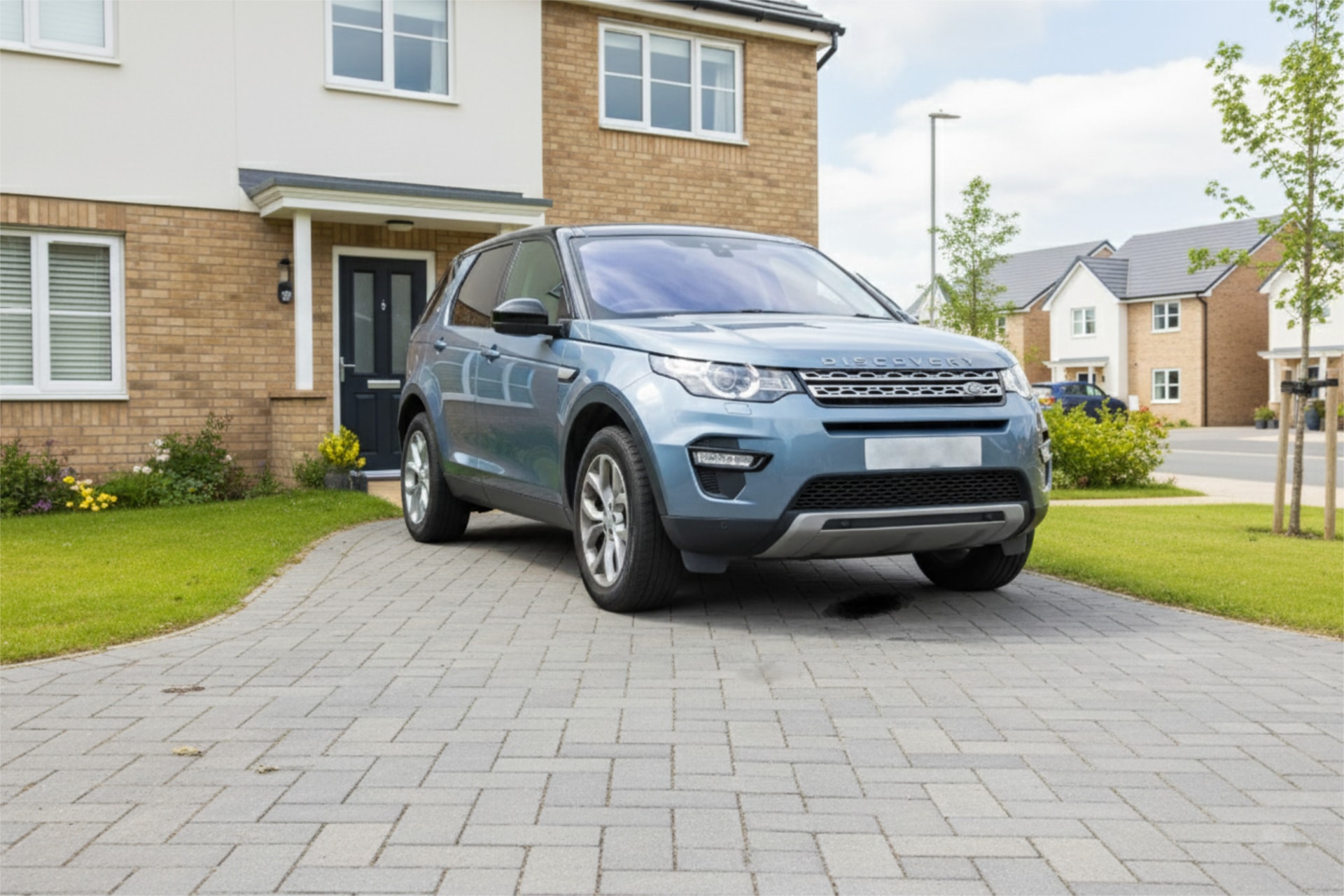Braking System
You may not think twice about your car’s braking system. Press the pedal, and the car stops. Simple, right?
But in reality, what’s happening under the surface is far more intricate. Your vehicle relies on a series of highly engineered components, working in harmony to bring over a tonne of moving machinery to a safe and controlled stop. It’s a remarkable process that’s easy to overlook but vital to your safety every single time you drive.
Understanding how your braking system works won’t just make you a more informed driver. It’ll also help you appreciate the critical role it plays in your safety and highlight why regular maintenance matters.
In this blog, South Coast Garage in Eastbourne breaks down:
- How car brakes work
- What happens when you press the pedal
- The key components in your braking system
- Why timely servicing is so important
Let’s start at the beginning…
How Car Brakes Work: Let’s Break It Down
Your braking system is one of the most powerful safety mechanisms in your car. It takes a moving object, which could be pushing speeds of 70mph, and brings it safely to a halt. All with just a light touch from your foot. But do you know how?
The Simple Science Behind Stopping
When your car is in motion, it’s storing kinetic energy—the energy of movement. Your brakes are tasked with safely dispersing this energy, and they do so by transforming it into heat through friction.
There are various braking systems in use today, but most passenger cars follow a similar core structure:
- Pressing the brake pedal triggers a hydraulic reaction within a sealed brake system.
- This pressure is transferred to all four wheels.
- At each wheel, either disc brakes (with pads gripping a disc) or drum brakes (with shoes pressing outward inside a drum) generate friction to reduce your speed.
- Modern vehicles also include an Anti-lock Braking System (ABS), which automatically adjusts pressure during hard braking to stop the wheels from locking up, helping you maintain control.
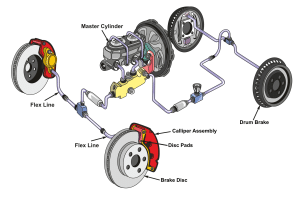
This process feels seamless from the driver’s seat, but inside your car, it’s an orchestrated series of actions. So what exactly happens behind the scenes when you brake?
Brake Pedal Pressed? Here’s What Happens Next
Every time you press the brake pedal, your car’s braking system springs into action, drawing on both hydraulic and mechanical systems to deliver safe deceleration.
Here’s how it all unfolds:
- Pedal Pressed
The process begins when your foot applies force to the brake pedal. - Servo Boost
That force is then magnified by a brake servo (also known as a brake booster). Without this component, you’d need significantly more leg strength to slow the car down effectively. - Master Cylinder Activation
The servo transfers amplified force to the master cylinder, which converts it into hydraulic pressure within the brake fluid. - Pressure Distribution
The hydraulic pressure is then distributed through the brake lines and flexible hoses to each wheel. Because the system is sealed, pressure is transferred with minimal loss. - Brakes Engage
- In disc brake setups, the pressure moves pistons in the callipers, pressing brake pads onto the spinning discs. This friction generates heat, reducing the car’s kinetic energy and slowing the vehicle.
- In drum brake configurations (often used at the rear), hydraulic pressure forces wheel cylinders to push brake shoes outward against the inside of a rotating drum. This action also creates friction, bringing the vehicle to a stop.
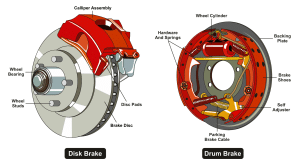
- System Resets
As soon as you release the pedal, internal springs and return valves prompt the system to reset. Pressure drops, pads and shoes disengage, and the wheels are free to turn again.
This all happens in fractions of a second, giving you smooth, responsive control with each tap of your foot.
Routine checks and servicing are the best way to ensure this finely tuned process continues to perform as it should. At South Coast Garage in Eastbourne, we inspect all components thoroughly during your scheduled service and flag any signs of early wear before they become costly problems.
Other Key Features of the Braking System
Anti-lock Braking System (ABS)
ABS plays a critical role during sudden braking. If a wheel is on the verge of locking up, ABS rapidly adjusts brake pressure, reducing and reapplying it multiple times per second. This prevents full lock-up, helping you steer while braking and reducing your stopping distance in slippery or unpredictable conditions.
Parking Brake (Handbrake)
Your parking brake is a separate system that operates independently of the main brakes. In most traditional setups, pulling the lever mechanically applies the rear brakes using a cable. Newer models often use an electronic handbrake switch to do the same job via a small motor.
Regardless of the setup, the parking brake functions separately from the main braking system and is legally required to act on at least two wheels, making it a vital safety feature as well as a parking tool.
Stay Ahead of Brake Problems with South Coast Garage
The braking system is one of the most important safety features on your vehicle. And like any complex system, wear and tear is inevitable. Ignoring early warning signs, such as squealing sounds, reduced pedal responsiveness or vibrations, can turn a minor fix into a major fault.
That’s why at South Coast Garage, we take brake safety seriously. Our technicians in Eastbourne inspect your braking system at every service. If something doesn’t look right, we’ll explain exactly what’s needed—clearly, calmly and without pressure.
We’ve built our reputation by offering reliable service that puts your safety first.
We have a {{average-rating}} star Google rating from {{review-count}} satisfied customers across Eastbourne, Brighton, Lewes and the wider East Sussex area. With South Coast Garage, you benefit from:
- A 12-month parts and labour guarantee on all brake repairs
- Free courtesy car while your vehicle is with us
- Expertise in dealer-level diagnostic evaluations
- Genuine or OEM-quality* parts fitted to manufacturer standards
- Honest, clear communication with no jargon or guesswork
If your brakes feel off, or you simply want peace of mind, book a brake inspection or full service today. Call South Coast Garage in Eastbourne on 01323 734473 and let our skilled team take care of it.
Call Now 01323 734473Save on Brake Servicing
*OEM stands for Original Equipment Manufacturer. When it comes to vehicle parts, this means the parts are made by the same company that produced the original parts for the vehicle manufacturer
